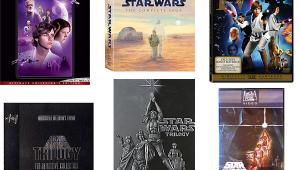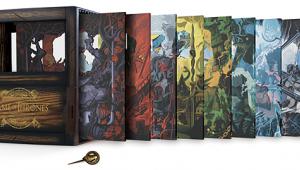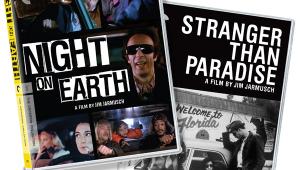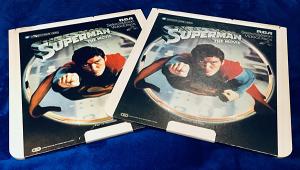Star Trek: Nemesis
Picture ***1/2
Sound ****
Film ***1/2
It's been said that the even-numbered Star Trek films are the best (though I'm also partial to No.3, The Search for Spock), but critics and most of the public didn't much take to this tale, the tenth entry in the Star Trek big-screen franchise. The ever-nasty Romulans are the villains here. (The now-friendly Klingons can be nasty, too, but the Romulans are snappier dressers and have better table manners.) Actually, it's the Romulans' more evil twins, the Remans, who are stirring up trouble here. The Remans, it seems, have eliminated the Romulan senate and Praetor, and have placed their own scheming leader, Shinzon (who is, oddly, human), in charge. Equipped with a ship bristling with weapons, including a planet-killer, Shinzon decides to settle a few scores with the Federation, and it falls on the crew of Star Trek: The Next Generation's Enterprise—who else?—to save the day.
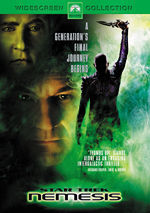 As written by Gladiator scribe and admitted Star Trek fan John Logan, the script is solid, if probably a bit too talky and character-driven for many Trekkers, and not easy to follow for the one or two filmgoers unfamiliar with the Trek mythos. As in most Star Trek films, most of the characters take a back seat to one or two crewmembers, here Captain Picard (Patrick Stewart) and the android Data (Brent Spiner). For me, the high points of the film are the dramatic confrontations between Shinzon (Tom Hardy) and Picard, and the excellent special effects. The low points are a wedding scene, a dune-buggy chase that's uncomfortably close to a James Bond outtake, and Data singing "Blue Skies." (It's a regular cultural conceit in filmed sci-fi—Star Trek is a prime offender—that the casual music of mid-20th-century America will still be widely known and played several hundred years from now.) There are one or two other nits I'd like to pick, but they'd give away too much of the plot.
As written by Gladiator scribe and admitted Star Trek fan John Logan, the script is solid, if probably a bit too talky and character-driven for many Trekkers, and not easy to follow for the one or two filmgoers unfamiliar with the Trek mythos. As in most Star Trek films, most of the characters take a back seat to one or two crewmembers, here Captain Picard (Patrick Stewart) and the android Data (Brent Spiner). For me, the high points of the film are the dramatic confrontations between Shinzon (Tom Hardy) and Picard, and the excellent special effects. The low points are a wedding scene, a dune-buggy chase that's uncomfortably close to a James Bond outtake, and Data singing "Blue Skies." (It's a regular cultural conceit in filmed sci-fi—Star Trek is a prime offender—that the casual music of mid-20th-century America will still be widely known and played several hundred years from now.) There are one or two other nits I'd like to pick, but they'd give away too much of the plot.
The film is very darkly photographed. The video transfer is good, but it won't be easy to reproduce on digital displays. The audio mix is, however, outstanding, with a particularly fine recording of Jerry Goldsmith's typically excellent score. The musical depth is impressive (the perspective is slightly laid-back, to the music's benefit), the sound open, the image well-defined.
Extras include a commentary track by director Stewart Baird, several featurettes, and deleted scenes. While several of the latter add nice character touches, they would have slowed down the action and were probably best left out. One welcome feature is the menu-selection screen at the very beginning of the disc, which gives the viewer the option of skipping the log-jam of in-your-face promotions that infect more and more DVDs. The downside is that there is no trailer for Nemesis itself. The one I saw in the theater was outstanding and well worth having.
This is a solid, though not definitive, addition to the Star Trek universe. And if it is, as is rumored, the final big-screen adventure of The Next Generation crew, it's not a bad sendoff. But it's well short of the moving farewell given the original crew at the end of Star Trek VI: The Undiscovered Country, lifted from J.M. Barrie's The Adventures of Peter Pan: "First star to the right and straight on till morning!"—TJN


